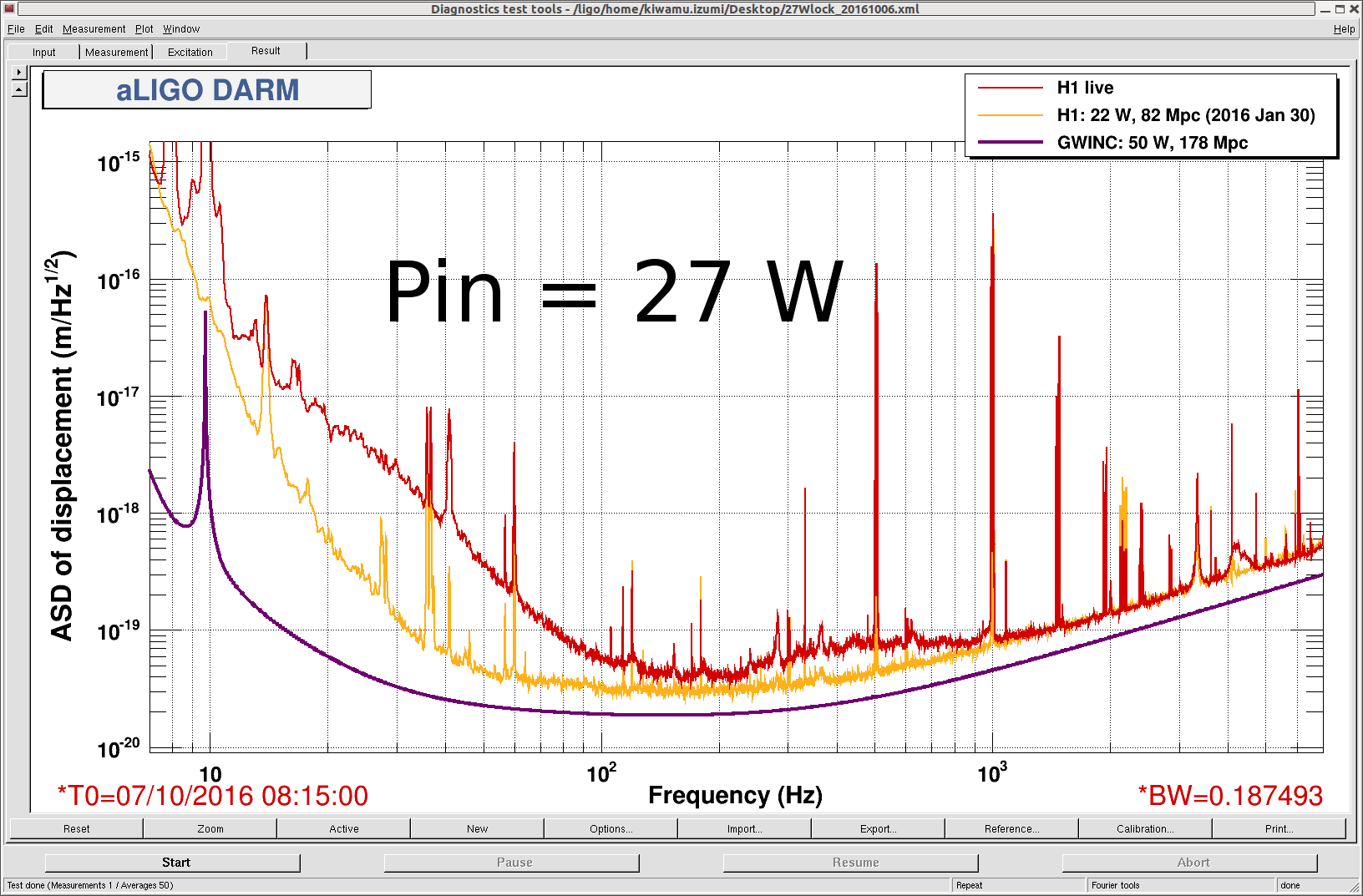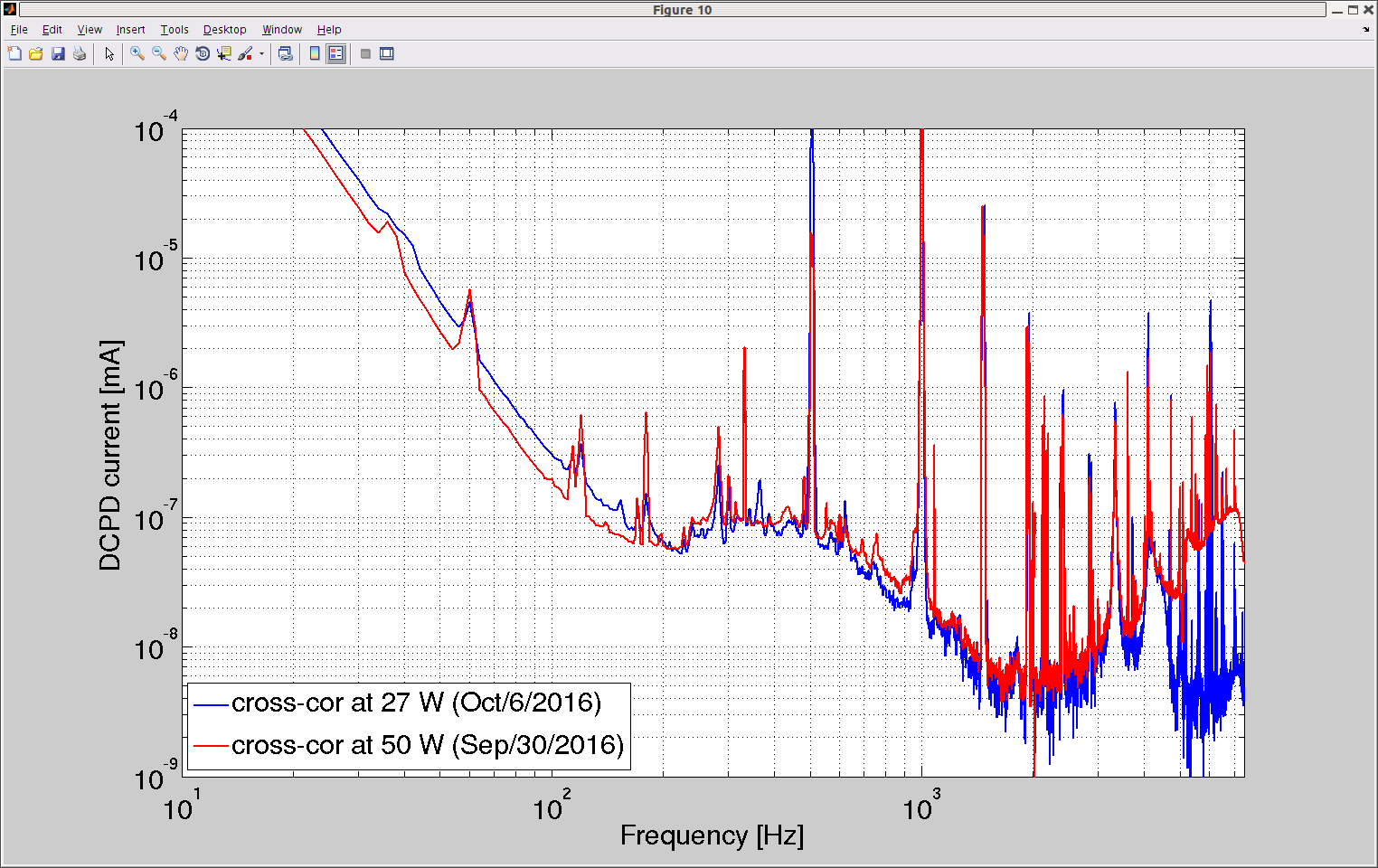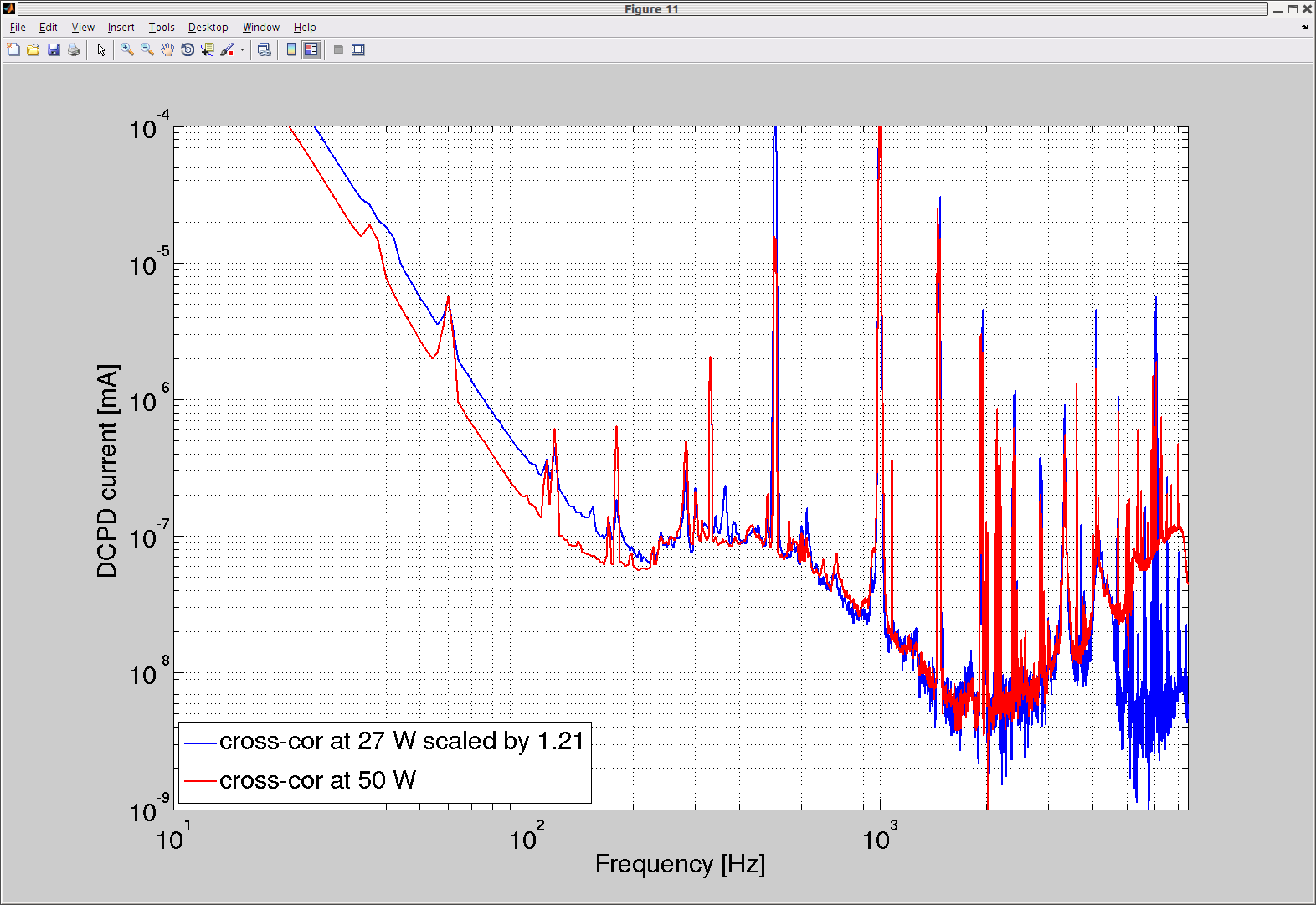Just a quick report. Broadband noise in 200-1000 Hz was also visible at a mid-high input power of 27 W.
I did not insert the cutoff filters in the hard ASC loops. ISS 2nd loop was fully engaged with a gain of 19 dB and the boost on. TCS was held at the lock acquisition settings, i.e. [CO2X CO2Y] = [500 mW 1000 mW]. The period when the interferometer was low-ish noise is in 8:15 - 8:25 UTC which was followed by lockloss due to me failing to handle PI mode 27.
Synopsis -- Not surprisingly, the broadband noise in terms of RIN at the DCPDs seems to grow proportionally to the carrier field amplitude in the interferometer.
[Cross correlated noise in DCPDs]
Here is a plot of cross-correlated noise between OMC DCPDs A and B. DARM loop suppression is removed by a post process.
For comparison, I overlaid the cross correlated spectrum of a 50 W lock which is from Sep 30th (30115). For both data, the OMC DCPD sum current was held at 20 mA by the DARM loop. It is clear that the mid-power lock (27 W in blue) has a slightly lower noise level in 200 Hz - 2 kHz. The high power lock has a much higher noise level above 2 kHz. I attach the plot in fig format as well. The pcal calibration line at 331.9 Hz for the mid-power lock was smaller than the high power lock by 20 %. Qualitatively, this is due to the higher optical gain in the high power lock although the ratio ideally should be sqrt( 27 W / 50 W ) = 36% instead of 20%. Probably this discrepancy can be partly due to the smaller recycling gain for the high power lock.
Now, if one scales the mid-power spectrum so that both the pcal lines have a same height at 331.9 Hz, it gives you the following plot.
The two curves overlap more in 200 Hz- a few kHz. This simply means that the broadband noise scales with the field amplitude of the carrier light circulating the arm cavities. Because the DARM optical gain also scales with the carrier field amplitude in the same way, this unfortunately means that the calibrated displacement noise does not change regardless of the laser power level. This rules out some local electronics pickup/cross-talks, but does not rule out laser noise couplings (jitter, intensity, frequency) or displacement noise.






